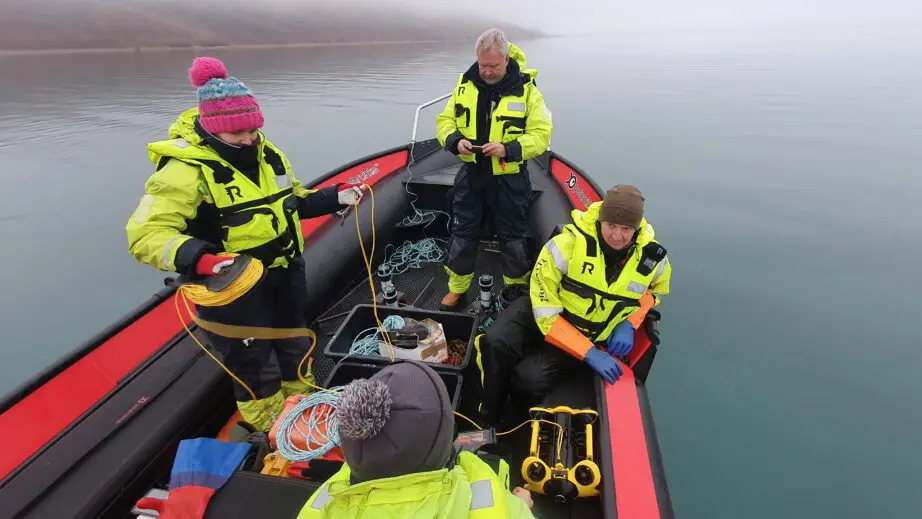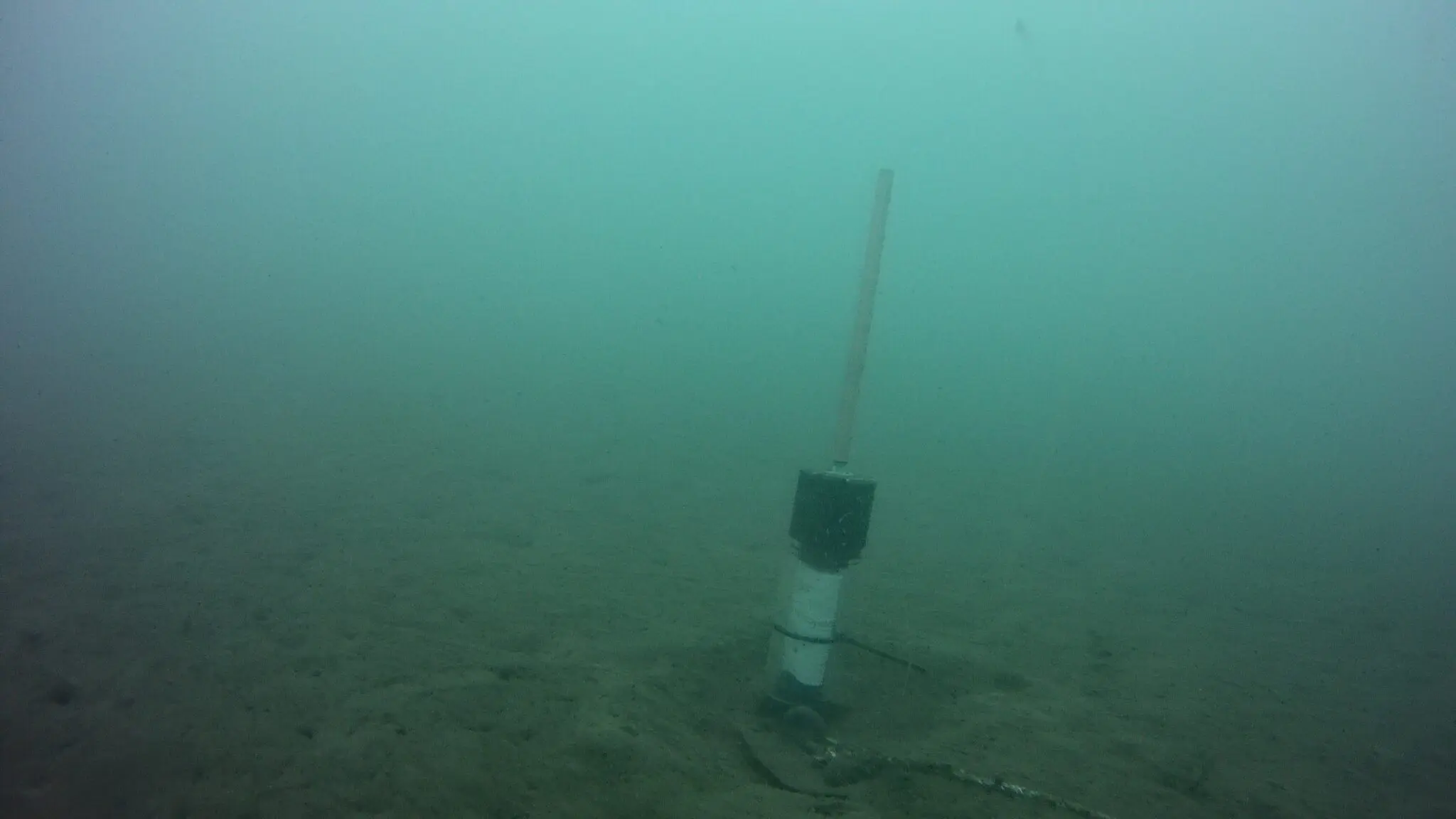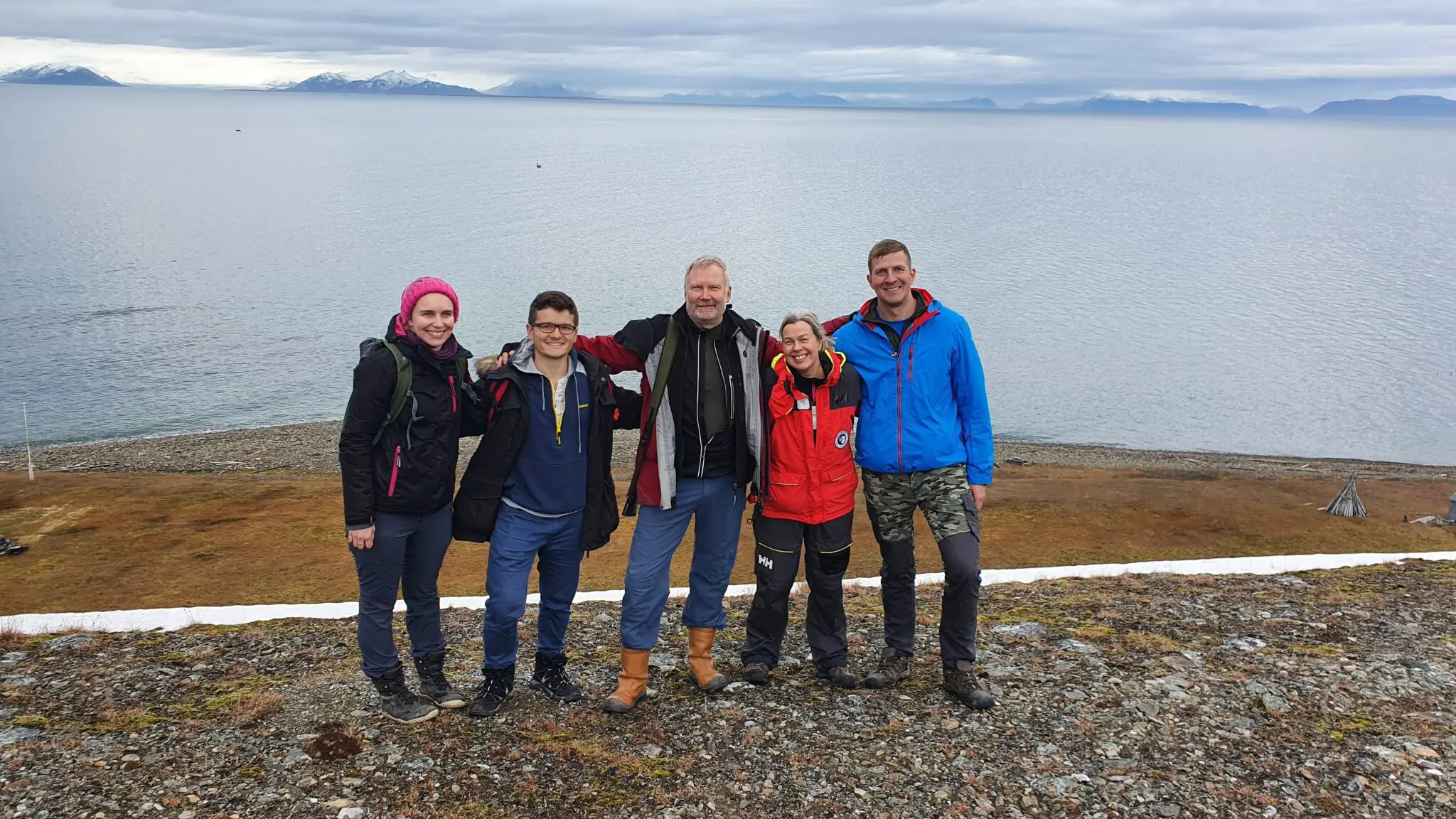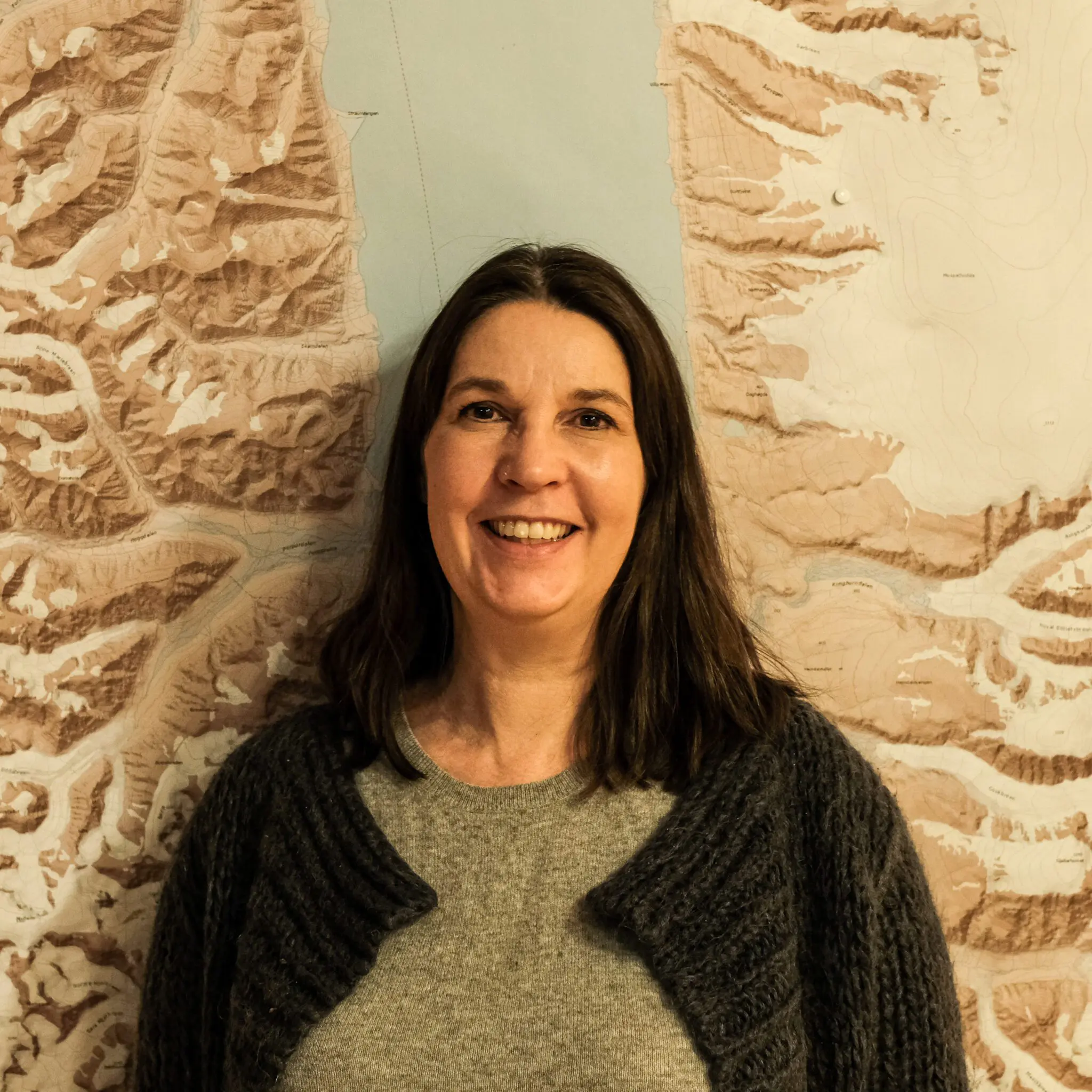CoastAdapt
Adapting to the rapidly changing Arctic: Implications of hydrodynamic processes on the coastal-marine environments in Svalbard.
active

Deployment of sensors in Billefjorden. Photo: Evelin Aljas
About the project
The CoastAdapt-project will study hydrodynamic and sedimentological processes in the near-shore coastal zone using novel technology developed for acquisition of water motion with very high temporal resolution. The state-of-the art technology enables to resolve full spectrum of waves in the shallow-water coastal zone, which is crucial for distinguishing waves and currents of different origins, from ocean swells to propeller wash from ships. Collected data allow studying wave and current impact and their interaction with shallow-water seabed, its benthic ecosystem and coastal-marine infrastructure, such as piers, pipelines and submarine cables.
Our ambition is to advance the knowledge on near-shore hydrodynamic processes and their interaction with coastal-marine infrastructure in the Arctic by using high-resolution wave and current measurements in combination with seabed sedimentological and bathymetric data as well as numerical hydrodynamic modeling. The acquired data will also allow validation of numerical wave models that will be used to study the impact of waves and currents on coastal-marine infrastructure in different fjord and coastal settings. Such datasets are extremely rare from the Arctic coastal environments where sea ice and high-energy wave processes are major drivers of the coastal evolution.
The objective of this project is to investigate the coastal-marine hydrodynamic and sediment transport processes in Isfjorden, with a focus on the areas near coastal settlements. New, high-resolution data acquired during this project will improve our ability to understand and foresee natural coastal evolution as well as the interactions between changing coastal-marine environment and man-made coastal infrastructure.



Background
The project is a bilateral initiative of The University Centre in Svalbard (UNIS) and Tallinn Technical University (TalTech), Estonia focused on the modern Arctic hydrodynamic processes and the resulting changes in the coastal zone.
Changes in the marine environment driven by the warming climate, changing ocean circulation, and rising sea level are largely understudied, and the resulting consequences for the communities and ecosystem are not well understood. The socio-economic pressures on the fjords in Svalbard, ranging from increasing outdoor life, nature-based cruise tourism, and commercial fisheries, are growing. This is a challenge but also an opportunity for innovative society development. The mitigation of adverse effects caused by rapid warming requires detailed and holistic knowledge of the environment and the ecosystems in order to ensure the future sustainable development of Longyearbyen and other Arctic coastal communities.
Local knowledge of the seabed physical and geotechnical properties as well as potential environmental forces on coastal-marine infrastructure is also needed for the future knowledge-based development of coastal communities in the Arctic. The construction of harbors in Svalbard started mainly as part of coal mining operations. Today, these harbors are in various conditions, some are well maintained (cf. Longyearbyen), whereas others (cf. Pyramiden) are in a rather poor condition. The longer-term site specific hydrodynamic and sedimentological data are extremely important for the future planning and development of the harbors and other coastal-marine infrastructure. For example, floating piers are cheaper and easier to install but their exploitation requires considerably more regular monitoring, service and repairs as compared with fixed quays.

Project group
UNIS will contribute to the project with Arctic coastal and seafloor geological expertise, acoustic seafloor mapping as well as sedimentological sampling and analyses, including the required instrumentation. TalTech has a long-term experience in developing and testing underwater sensor technology for wave and current recording as well as related mathematical analysis and numerical modeling of coastal environmental data. In addition to the people listed below, several BSc and MSc students (at both institutions) will be involved and benefit from the data acquired during this project.
UNIS partners:
External partners:
Laura Piho (TalTech)
Simon Godon (TalTech)
Maarja Kruusmaa (TalTech)
Atko Heinsalu (TalTech)
Vladimir Karpin (TalTech)


